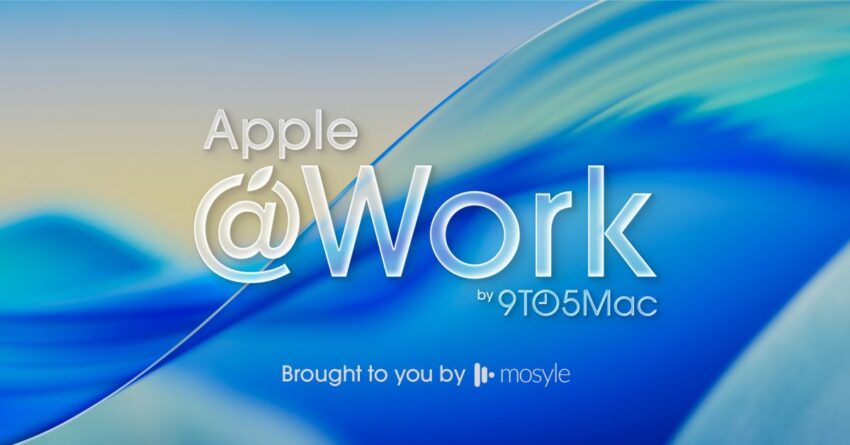
apple work why apple should cut the Apple’s current policy on software update delays may need reevaluation in light of evolving security threats and the increasing reliability of its updates.
apple work why apple should cut the
Background on Apple’s Update Policy
Apple has historically provided IT administrators with the option to delay software updates across their device fleets. This capability was introduced as part of Apple’s modern device management stack, which aimed to give IT teams the necessary time to test and validate updates before deploying them to thousands of devices. The rationale behind this policy was straightforward: ensuring that critical business operations remained uninterrupted by potential software issues that could arise from new updates.
In the early days of software updates, the landscape was markedly different. Updates often introduced significant changes that could lead to compatibility issues with existing applications or even cause system failures. As a result, IT departments were understandably cautious, opting to delay updates to mitigate risks. This cautious approach allowed organizations to maintain control over their environments and ensure that all systems were functioning optimally before any changes were made.
Changing Threat Landscape
However, the world of cybersecurity has changed dramatically in recent years. Security risks have evolved, becoming more sophisticated and aggressive. Cyberattacks are now more frequent, and the methods employed by malicious actors have become increasingly advanced. In this context, the 90-day delay that Apple currently allows for software updates appears outdated.
Organizations face a constant barrage of threats, from ransomware attacks to data breaches, making timely software updates crucial for maintaining security. Delaying updates for an extended period can leave systems vulnerable to exploitation. Cybercriminals are quick to identify and exploit known vulnerabilities, and a 90-day delay could provide them with a significant window of opportunity.
Implications of Extended Delay
The implications of maintaining a lengthy update delay are significant. When organizations choose to postpone updates, they risk exposing their networks to known vulnerabilities that could have been patched with timely updates. This delay can lead to severe consequences, including data loss, financial repercussions, and damage to an organization’s reputation.
Moreover, the longer organizations wait to implement updates, the more challenging it becomes to manage their device fleets effectively. As software evolves, older versions may become incompatible with new applications or services, leading to a fragmented environment that complicates IT management. This fragmentation can result in increased support costs and reduced productivity, as employees may encounter issues that stem from outdated software.
Reliability of Apple’s Updates
In recent years, Apple has made significant strides in improving the reliability of its software updates. The company has focused on delivering updates that are less likely to disrupt users’ workflows or introduce new issues. As a result, many organizations have found that the risk associated with deploying updates has diminished considerably.
With this increased reliability, it is reasonable to question whether the 90-day delay is still necessary. If updates are now more stable and less likely to cause problems, organizations may benefit from adopting a more proactive approach to software management. Cutting the maximum delay down to 30 days could strike a better balance between security and operational efficiency.
Benefits of a 30-Day Update Delay
Reducing the software update delay to 30 days would offer several advantages for organizations:
- Enhanced Security: A shorter delay would reduce the window of vulnerability, allowing organizations to address security risks more swiftly. This proactive approach would help safeguard sensitive data and protect against emerging threats.
- Improved Compliance: Many industries are subject to regulatory requirements that mandate timely updates to software and systems. By adopting a 30-day delay, organizations can better align with compliance standards and avoid potential penalties.
- Streamlined IT Management: A shorter update cycle would simplify IT management by reducing the complexity associated with maintaining outdated software. IT teams would spend less time managing delays and more time focusing on strategic initiatives.
- Increased User Satisfaction: Employees benefit from having access to the latest features and improvements that come with software updates. A 30-day delay would enable organizations to provide a more modern and efficient work environment.
Stakeholder Reactions
The prospect of reducing the software update delay has elicited a range of reactions from stakeholders within the Apple ecosystem. IT administrators, security professionals, and organizational leaders have varying perspectives on the potential change.
IT Administrators
Many IT administrators recognize the need for timely updates but express concerns about the potential for issues arising from new releases. While they appreciate the reliability of Apple’s updates, some remain cautious about adopting a shorter delay. They argue that a balance must be struck between security and the need for thorough testing before deployment.
To address these concerns, Apple could provide additional resources and tools to assist IT teams in testing updates more efficiently. This could include enhanced testing environments or automated testing solutions that allow organizations to validate updates quickly without compromising security.
Security Professionals
Security professionals generally advocate for a shorter update delay, emphasizing the importance of staying ahead of emerging threats. They argue that a 30-day delay would significantly reduce the risk of exploitation and help organizations maintain a more robust security posture.
Many security experts believe that organizations should prioritize security over the potential inconveniences associated with new updates. They argue that the benefits of timely updates far outweigh the risks, especially given the increasing sophistication of cyberattacks.
Organizational Leaders
Organizational leaders are often focused on the bottom line and the overall efficiency of their operations. Many recognize that timely updates can lead to improved productivity and reduced downtime. However, they also understand the importance of ensuring that their IT teams are adequately prepared to handle new releases.
To facilitate a smoother transition to a 30-day update delay, organizational leaders may need to invest in training and resources for their IT teams. This investment could pay dividends in the long run by fostering a culture of proactive software management and security awareness.
Conclusion
As the cybersecurity landscape continues to evolve, it is essential for organizations to adapt their software management practices accordingly. Apple’s current 90-day software update delay may no longer be suitable in the face of increasing security threats and the improved reliability of updates. By considering a reduction to a 30-day delay, Apple could help organizations enhance their security posture, streamline IT management, and improve user satisfaction.
Ultimately, the decision to adjust the update delay should be guided by a comprehensive understanding of the risks and benefits involved. Engaging with stakeholders across the Apple ecosystem will be crucial in determining the best path forward. As organizations navigate the complexities of modern technology, a proactive approach to software updates will be essential for maintaining security and operational efficiency.
Source: Original report
Was this helpful?
Last Modified: October 19, 2025 at 7:36 am
1 views















